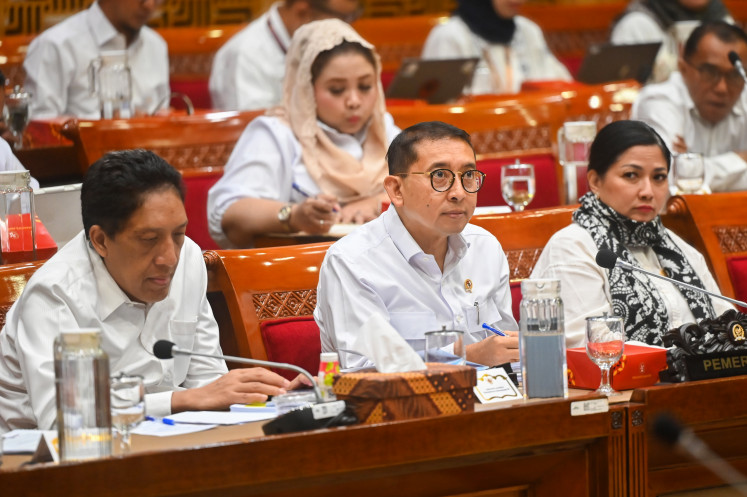Popular Reads
Top Results
Can't find what you're looking for?
View all search resultsPopular Reads
Top Results
Can't find what you're looking for?
View all search resultsGamelan musician, composer Sapto Rahardjo dies at 54
Noted Indonesian contemporary gamelan musician Sapto Rahardjo died at54 very early in the morning on Friday in Yogyakarta, leaving a wifeand three children He died at 1:40 a
Change text size
Gift Premium Articles
to Anyone
Noted Indonesian contemporary gamelan musician Sapto Rahardjo died at 54 very early in the morning on Friday in Yogyakarta, leaving a wife and three children
He died at 1:40 a.m. in Panti Rapih Hospital after being hospitalized for over two weeks for appendicitis and liver disease. His body was buried Saturday afternoon at Blunyahgede public cemetery in Sleman, Yogyakarta.
Sapto had been busy arranging the wedding of his second daughter Desyana Wulani Putri, 28, with Bagus Arianto Saputra Nasution, set to take place by the end of this year. The family went ahead with the wedding during the funeral services before Sapto's burial.
Hundreds of performers, artists, musicians and public officials attended the funeral rites at Sapto's home on Jl. Gayam.
"He was the best son of Yogyakarta. It will be difficult to find a replacement for him," said Yogyakarta Mayor Herry Zudianto, who was a high school classmate of the renowned musician.
Herry said one of Sapto's legacies was the gamelan corner, computerized documentation of Sapto's compositions which younger generations could easily access to learn more about gamelan. Gamelan corner is a highlight at the Yogyakarta science park, Taman Pintar.
Sapto was known for his initiatives to make gamelan more accessible to younger generations and to the world. He established the Gamelan Gaul community, in which he mixed traditional gamelan music with contemporary compositions.
Colleagues remembered him as a figure of consistence and determination in his work. "Gamelan was not just a profession for him but a call from his heart," choreographer Tanto Mendut said during his speech at the funeral.
Sapto's eldest daughter Ishari agreed, saying her father was a hard worker and his dedication to music and the arts was considerably high. "He always told us not to burden others and to work hard to achieve our dreams," she said.
Sapto developed his love for music, especially gamelan and classic Western traditions, since he was a little boy. He taught himself to play the instruments in the ensemble of tuned gongs through the writings of Indonesian gamelan master Ki Cokro Warsito.
He created his first contemporary music in high school, using the sounds of used tin cans. Ever since then he had been composing, performing and recording. Unafraid of other ways of experiencing the tradition, he used synthesizers to create new channels for playing and disseminating gamelan music to the world. Apart from teaching gamelan in France, the Netherlands and the US, he collaborated often with musicians from many countries.










